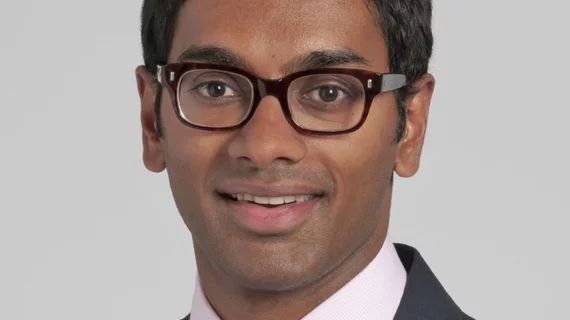2021 marks the 15th anniversary of two studies that sent shock waves throughout the cardiology community
Data from the BASKET-LATE study, presented at the 2006 American College of Cardiology Scientific Sessions, and a meta-analysis by Carmenzind et al., presented at that 2006 European Society of Cardiology Annual Meeting, suggested that drug-eluting stents (DES) were associated with an increased risk of late stent thrombosis, cardiac mortality, MI and all-cause mortality.
Cardiologists around the world scrambled to find out why this was happening while debating if the duration of prescription antiplatelet therapy (only clopidogrel at time) was sufficient for patients who had DES.
At the time, the take-home message was smple: proceed with caution in the use of DES.
Back in 2006, there were only two DES on the market: Cypher from Cordis, a Johnson & Johnson company, and Taxus from Boston Scientific.
Twenty years later, the current generation of DES have a much better safety profile and are an integral component of the armamentarium used to treat coronary artery disease. There are also more stent manufacturers now—including Medtronic, Boston Scientific, Abbott, Biotronik and others—and additional antiplatelet agents doctors can prescribe.
Amar Krishnaswamy, MD, section head of invasive & interventional cardiology at the Cleveland Clinic, spoke to Cardiovascular Business about the current state of DES and the future of stent technology.
How have stents changed the way CV disease is treated?
Amar Krishnaswamy: Generally speaking, the survival of patients and quality of life for patients having an MI have improved substantially over the last 30 or 40 years because of heart catheterization and stents in addition to the public health initiatives that have gone into earlier recognition of MI and also the medications that we use for blood pressure, cholesterol, and so on.
Patients who have what we call stable angina can have significant quality of life limitations because of their symptoms, and so stenting has proven to be a very safe and effective alternative to the other option, which is cardiac surgery or bypass. In that regard, stents have been very beneficial for elective treatment as well.
How important it is for patients who have had stents to follow recommended medication protocols?
There are a couple of different aspects of the medical therapy that we should address after stenting.
The first is the duration of dual-antiplatelet therapy (DAPT). This usually includes life-long aspirin and secondary agents such as clopidogrel or prasugrel or ticagrelor.
The duration of that second agent really depends on patient circumstances. The recommendation for DAPT can be as short as one month or as long as years.
It’s really imperative that patients discuss with their interventional cardiologist how long they should be on those medicines.
Related to that, many patients require various different procedures or surgeries after having had a stent.
They will often receive a generic recommendation to “stop your blood thinners” at a certain time-period before that procedure.
For a patient with a stent, that may or not be a safe recommendation. Any recommendations to stop your blood thinners should be discussed you’re your interventional cardiologist.
With regard to the secondary preventive therapies, meaning those medications and lifestyle modifications that we recommend, they can includes statins, antihypertensives, diet recommendations, exercise and cardiovascular rehab recommendations and the management of other related cardiovascular risk factors such as diabetes or tobacco use.
Those are all as important in maintaining future coronary health as the index stent was in the first place.
What is the status of bioresorbable stents?
The bioabsorbable scaffold held a lot of promise because it’s a very attractive idea that you can open a vessel, keep it open for as long as the vessel needs to heal and then the stent itself completely dissolves away and there is nothing left behind. Unfortunately, the first generations of that technology, while effective in that regard, raised concerns about thrombosis. It did not have as safe a profile as everyone expected or hoped.
There have been analyses that perhaps we didn’t know enough about how to optimize the safety of those stents, the size of vessel that should have those stents, and how to make sure that the implantation process is optimized for future safety. There has been a lot of research into that.
So, there are currently companies working on the next generation of bioabsorbable platforms and there are clinical trials ongoing.
What advancements go you see on the horizon regarding stent technology?
Interventional cardiology has been a leader in trying to make things better for patients with regard to catheter-based technology.
In the arena of stents there is plenty of device innovation among the major companies and smaller companies looking at how to make stents even safer. These are exciting areas.
Trying to figure out where the pitfalls were in the bioabsorbable scaffold and make that technology better will be interesting to see.
As far as opening up blockages is concerned, we have access to newer technologies that help us to open up arteries that are completely blocked – called chronic total occlusion. We are a lot better at opening those vessels now than even four or five years ago.
There are also newer techniques to re-open stents that have narrowed, called in-stent restenosis, or break-up calcium inside vessels that previously made it difficult to properly open and stent blockages.
We are also using intravascular imaging, things like intravascular ultrasound or optical coherence tomography, to look inside the vessel as we place stents and better understand how to optimize these stents to be more effective and last longer.
